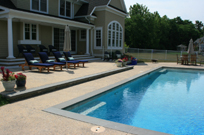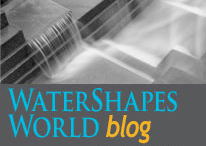Even these days, when new houses tend to be overly large and their lots tend to be quite small, it’s rare to encounter a situation in which there’s nothing in a backyard other than a basic patio. Indeed, there’s almost always something more to do in designing a backyard — and on many happy occasions, there’s actually a good deal to be done in integrating spaces beyond the patio into
When people talk about pools these days and have something ambitious in mind, many of the conversations focus on vanishing edges, perimeter overflows, infinity edges, knife edges, wet decks, disappearing edges and whatever other terms one might use in describing water-in-transit effects. In lots of these cases, if not most, these discussions are misdirected: Just because
In What City Were the Recent Pan American Games Held?
To see WaterShapes TV, Part 4, click here mySpace
As you might imagine given our plans for AquaticSpacesNetwork (see my last blog entry, “Charting a New Course,” for details), I’ve been thinking a lot lately about reaching out to consumers. Along the way, it has occurred to me that good information is almost always universally useful — that is, information that helps build
When I first began organizing these “Travelogues” several months ago, my sincere intention was to focus on watershapes found within the United States. Partly it was a gesture to the restricted travel budgets of modern times, but I also wanted to highlight the fact that
Once I’ve worked my way through traffic-related issues of patio design (see “Defining the Flow” in the November 9 edition), I turn my attention to an array of other factors that influence the space, starting with





















Life on the Leading Edge